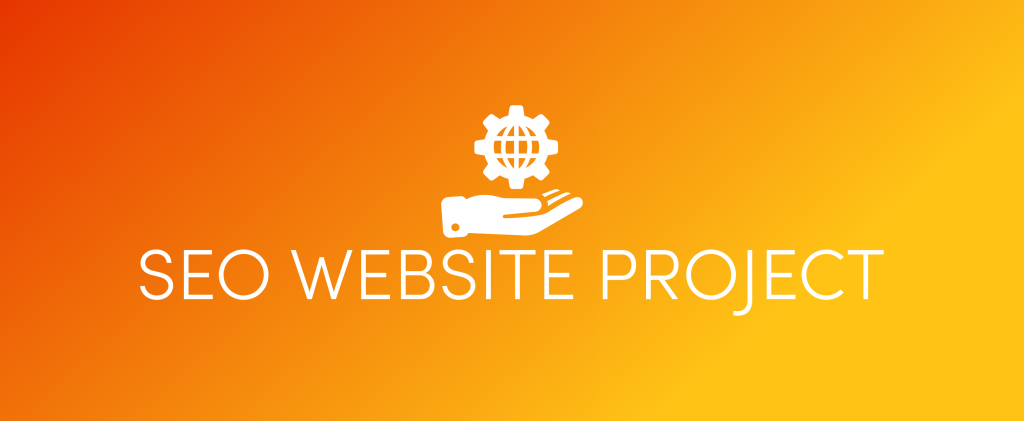A delayed website is a bad sign for your company. Customers will not return to a site that takes 5 seconds or longer to order. A delayed website will also make visitors feel like they are dealing with a bad business. Delay website is not good for good customer experience. To ensure that your customers do not feel like this, adjust the download speed of your site.
Fast websites are important for customer information. The slower your website, the less likely a customer will buy from you. While it may seem difficult to change this mindset, the best way to improve your website speed is to focus on improving the overall experience. The speed of your site is a sign of your commitment to the brand. If your website is delayed, your customers will not return.
People hate slow down websites. Not only is it annoying, but it also makes them less confident in your personality. Additionally, a quick website increases your customer’s chance to promote your brand to their friends. It is easy to see why slow zones are detrimental to change. In fact, 47% of customers expect a website to load within two seconds, and 40% of them will leave if the site takes longer than three seconds.
Delay websites are the biggest change for consumers. They make a good impression on your company, and encourage them to spread the word about your brand. More importantly, it leads to higher sales and media followers. So, what are you waiting for? Start today!
A slow website will disappoint customers. If they wait several seconds to find the page, they will not stay. It will affect conversion rates and turnover. The slow website drives away customers. It is important that you monitor the speed of your website. The faster the load, the better accepted by your audience. If it is too late, they will leave your site.
A slow website will not only harm your business. If you are doing business, it is important to be able to keep customers happy. If your website takes a long time to load, it also affects the perception of your customers about your products and services. This means you are losing customers. So it is important that you take the time to increase the speed of your website.
The website delays a major exit for customers. It will make your website look useless. It will also slow down your transformation. The speed of your website will make a difference in your bottom line. Your website will not be successful if it is very slow. If your website is slow, it prevents customers from using your website. It takes a long time to load a page.
Customer experience is a key factor in customer satisfaction. A delayed website can drive away customers. A delayed website will not only frustrate, but also cause you to lose business. When you are worried about a slow website, you will want to take immediate action to correct its behavior. So, start by designing your website. While a slow site can hurt your customers, it also discourages them from spending money with you.
Having a website is a slow process. It will drive your customers away. If your website is slow, your customers will think you have failed. If your website is slow, your business will fail. But speed is key to customer satisfaction. It will increase your conversion rates and increase your customers’ desire to tell others about your brand. If your website goes down fast, your customer will come back again.
One second. It’s the fastest way people can get a website loaded and expectations are just growing, said Josh Koenig, chief consultant for the web company Pantheon. But, it was not so long ago that the speed website was the preferred option.
Koenig still remembers the days, just 10 or 15 years ago, when websites were slow to crawl or crash because there were too many users on the server. Or before that, when people would wait 10 minutes for their dial to connect to check AOL.
But today, users who look forward to speeding up times may be looking at their phone or desktop because of the progress made by Amazon and Google in web browsing, Koenig said. They can stick for up to three seconds for images and text to get into place, but anything more than that and impatience go into it.
Contents
3 Quick Ways to Improve Your Website Speed

It is not a bad user experience that is on the line when it comes to speeding up a slow website – it can also affect the type of company and revenue. Waiting for a slow-to-download website is as frustrating as watching a horror movie, according to a 2016 report from call company Ericsson.
And in a survey of 1,250 people, half of respondents said they would leave their shopping cart on the e-commerce website if it took longer than six seconds to load the page, according to digital.com, a small business software review website.
However, it is not easy to build a fast webpage that can compete with the interests of big companies like Amazon or Google. For many companies, how fast is it fast enough?
The Need for Speed

There are two first events that have led to a hands-on race on fast-paced websites: Amazon and the rise of online shopping and mobile browsing.
Whether it makes sense or not, caregivers are unaware that all websites are as fast and responsive as Amazon, Koenig said. Meanwhile, people browsing on the phone do not have time to focus on sticking to a website that is not there right away.
So, what does fasting mean in today’s world? More than half of respondents (53 percent) in the digital.com survey said they expect the website to load in three to three seconds. And less than 50 percent of those surveyed will leave a website if it takes longer than six seconds.
If a website fails to live up to expectations, it can seriously damage a company’s reputation. In fact, 45 percent of respondents in the digital.com survey said that companies with a slow website have left negative comments about them.
“It lowers the confidence level because people are so used to it that it comes out so fast that it would seem pointless if the pages don’t load up quickly.”
The experience of quick browsing has become like professionalism, trust and security, according to Huy Nguyen, who works as the digital marketing manager at digital.com. If an e-commerce page takes too long to load, people begin to wonder if this company is trustworthy or not. They wonder how their data is stored and question the business’s ability to deliver products on time if they can’t afford a website quickly.
“It reduces the confidence scores because people are so used to getting out so fast that it would seem pointless if the pages don’t load up quickly,” said Nguyen. “It affects the reputation of the brand, and … consumers can promote it a bit.”
The real goal for most companies should not be more than three seconds, Koenig said.
“Performing within seconds is a fun thing for the user. I clicked something and found something,” said Koenig. “Once you hit 10 seconds, you’ll lose everyone. People have stopped waiting for your item to load, deleted it or opened another browser tab and started another operation.
More on Product What is Vanity Metrics? How Can You Make Your Company Free?
Prioritize a Fast Homepage

The first impression is all when it comes to browsing the web, and a few incidents can affect a company’s customer perception like a slow front page.
Imagine for a moment that you are drifting through Instagram and stumbling upon a pair of snow boots, Koenig said. You just happen to be looking for shoes (thanks personalized ads), and you click on a link, just for the page to take a few seconds to load.
Maybe you’re waiting, but too much, you’ll leave that page and find another ice cream store, Koenig said. All the money spent on building a social media presence is wasted due to the delay on the first page.
“If that doesn’t work right away, then I’ll be like,” Ugh, whatever. I’m bored, ‘or,’ That doesn’t seem fair ‘…
“If that doesn’t work right away, then I’ll be like,” Ugh, whatever. I punched him, ’or,‘ This does not seem like the truth, ’” Koenig said. “This first impression is a sign of loyalty.”
When you find someone searching for your website, your second page may be two- or three-seconds weight loss time. But the home page should be as fast as possible, as it puts the prospect of browsing.
The best way to have a home page is to quickly download the page from the Google directory and edit the content. The fewer images and text you have to download, the faster the page. However, not every company can rely on brand name and fruitless to handle users. They still need more interiors and images to set their style.
But there are a few areas that may slow down your web page speed that are often overlooked: image size, classic JavaScript tags and third-party plug-ins.
Optimize Your Image Sizes
One of the biggest mistakes Nguyen sees is e-commerce companies failing to upload their product photos to the website. They take in-depth, high-resolution images and place them directly in their internal management system.
Not only are the files large enough to display accurately on the website, but the images are also a great tool to slow down your website, Nguyen said. Adjusting your photo resolution is an easy way to reduce stress time.
It is also important to check how many photos and videos you want to post on your home page. Even if the files are updated, it may take some time for them to load. Consider putting some of the deeper images on the second page and saving them, Nguyen said.
Eliminate Old JavaScript Tags
On any given website, Koenig estimates that there are usually 30 or 40 JavaScript tags running at any given time. Other common tags include Google Analytics, mapping to see where customers spend most of their time on the page, customer data tracking application, pop-ups and endless scrolling.
Some of these tags provide the company with valuable user data, but they also come with a high web speed. If you are a UX administrator running an existing website or perhaps working on an existing one, Koenig recommends running a review of these tags.
Often, you will encounter extra tags over time and will no longer work on the current website, Koenig said. It may be a device connected to a commercial network that is no longer in use but has not been removed from the codebase. The tags do nothing but reduce the load times.
Reduce Plug-Ins
Another common design for web running is the third-party API plug-ins. Platforms like WordPress or Shopify offer a huge market for these plug-ins to allow users to customize and improve their website.
While some of these plug-ins can be helpful – like adding a search bar or PayPal for easy viewing – Nguyen often sees companies being taken over by listing free trials and experiments. As a result, they often end up with a backlog of disabled plug-ins but still take resources to load.
Take the time to filter your plug-ins by weeding.
More on Web SpeedHere’s Why SEOs Don’t Have to Worry About Google’s Page Event Improvement.
Find Your Optimum Speed

So, how fast should your website go?
While one second remains a fast web browser, it is not always the goal. Website running requires strong build and often comes with the price of content or data tracking that a company relies on to grow its customers, Koenig said. Circumstances have a role too. If you offer a specific product or have a complex service – such as a powerful website – web running is not important because users have no other choice.
For the rest, however, Koenig recommends directing about two-second weight-bearing time – “especially if they are polishing the metrics,” Koenig said. At that point, the customer encounters the website more in real time. Although speed requires a lot of work and does not drive a lot of value, Koenig said.
“You don’t have to be Amazon or Facebook or Google with resources to do a good job …
“You don’t have to be Amazon or Facebook or Google with that resources to do a good job,” Koenig said. “It comes down to making it a priority – thinking of it as a business guide and not a technology thing and seeing how it makes you do it right.”
However, a quick website can have a huge impact on the company. In fact, 15 years ago, Amazon found through A / B testing that for only 100 milliseconds of latency, it paid them 1 percent in sales. It just seems to be true today.
Web running is also an important factor in Google’s SEO courses, which drive traffic to your website. When evaluating the speed of your website to increase the SEO reach, it is important to consider:
“If you can nail it all, then you have a good user experience,” said Koenig. “But you start with the beginning. If you can’t bring something up quickly, they won’t stay close to see what happens next.”
Web design tools like Google’s PageSpeed Insights can help you see where you stand on the run compared to your competitors, and customer surveys can help you determine if web speed is affecting your customers.
Finally, it is not easy to build a fast website. It is important to set realistic goals and strive. Koenig recommends setting a time budget. If your goal is three seconds and you are going into 2.5 seconds, try how you want to use the other half-second. Maybe you add some content to connect users or use some data tracking tool.
Don’t underestimate the value of a fast website – your customers are not.
